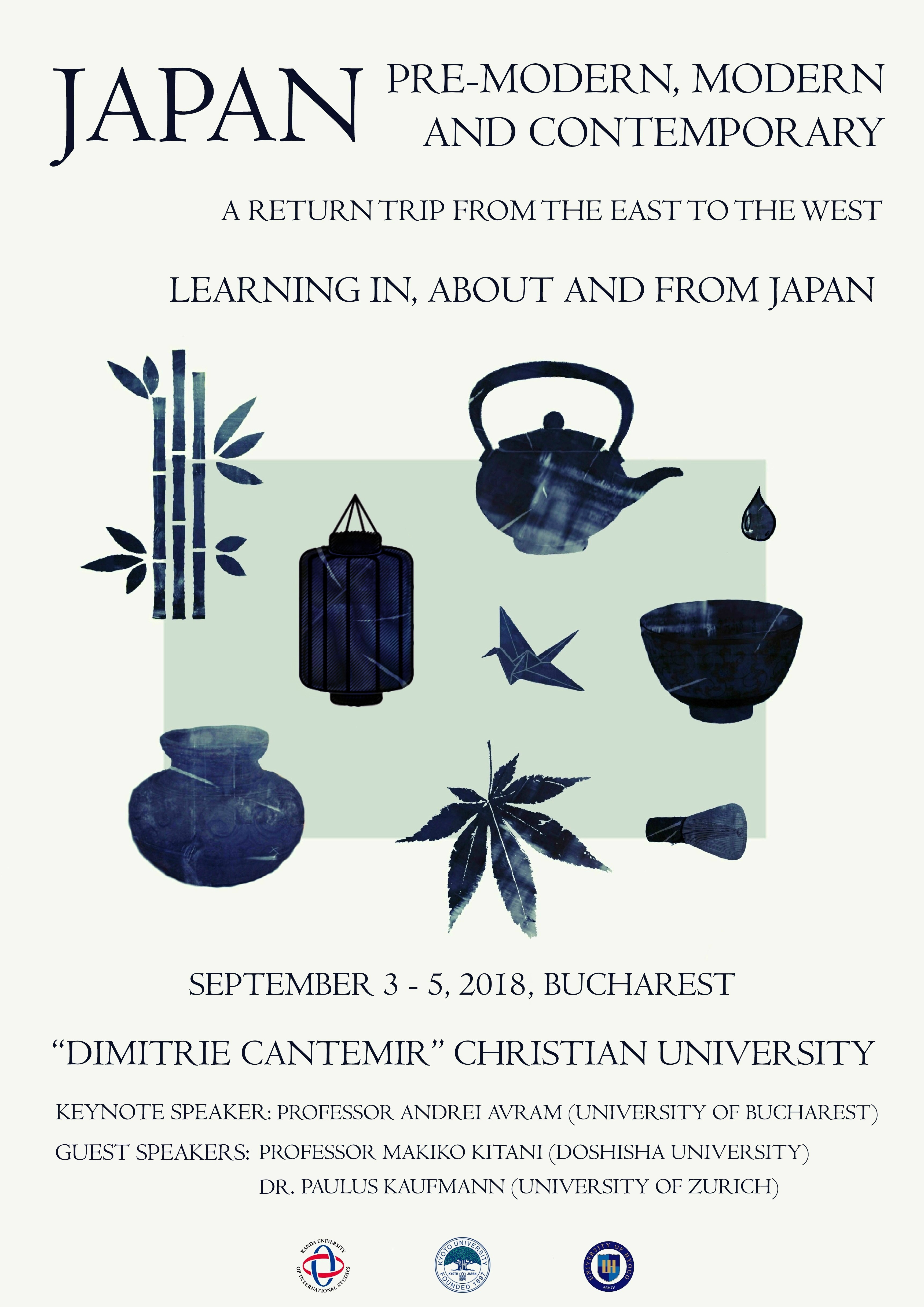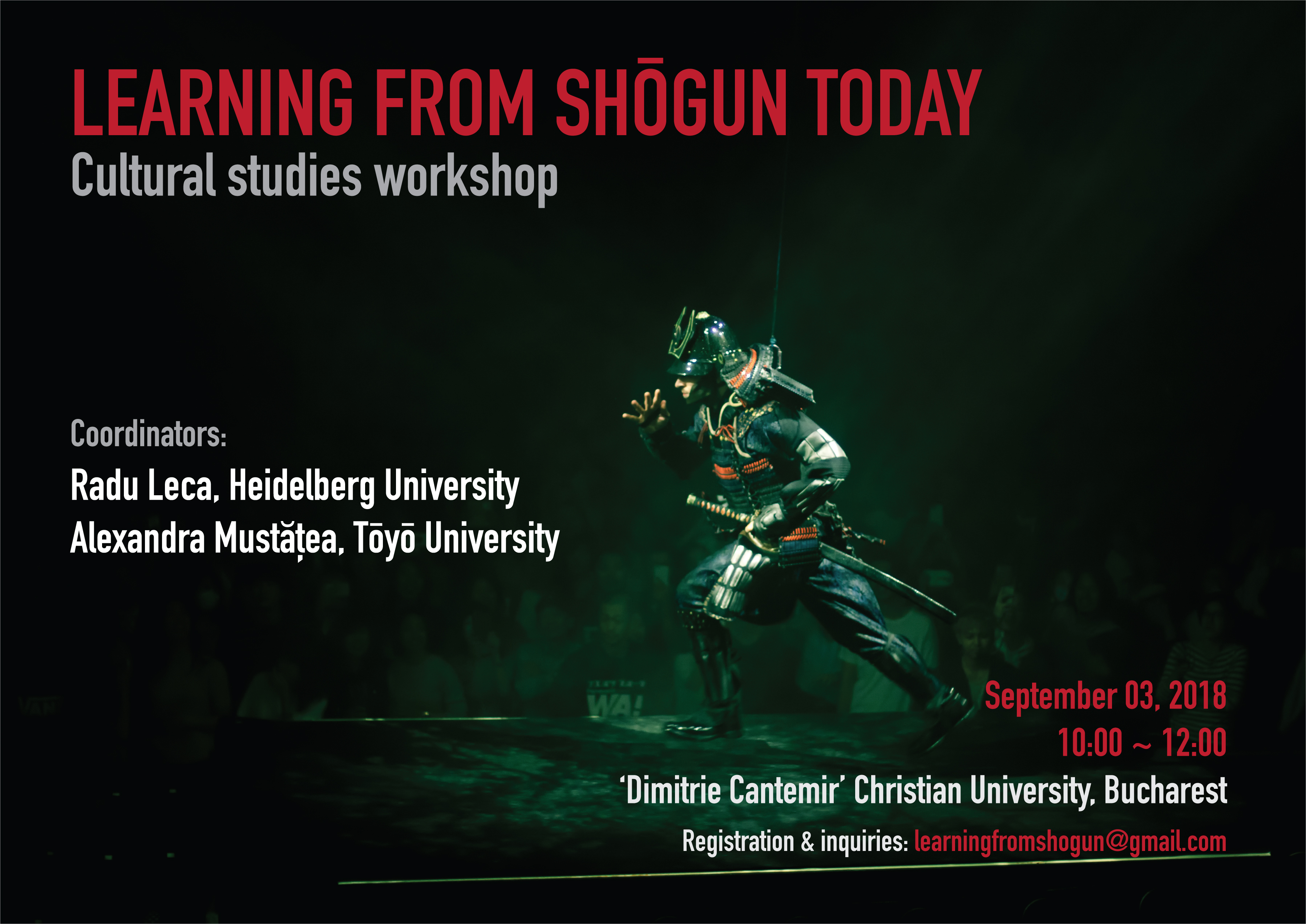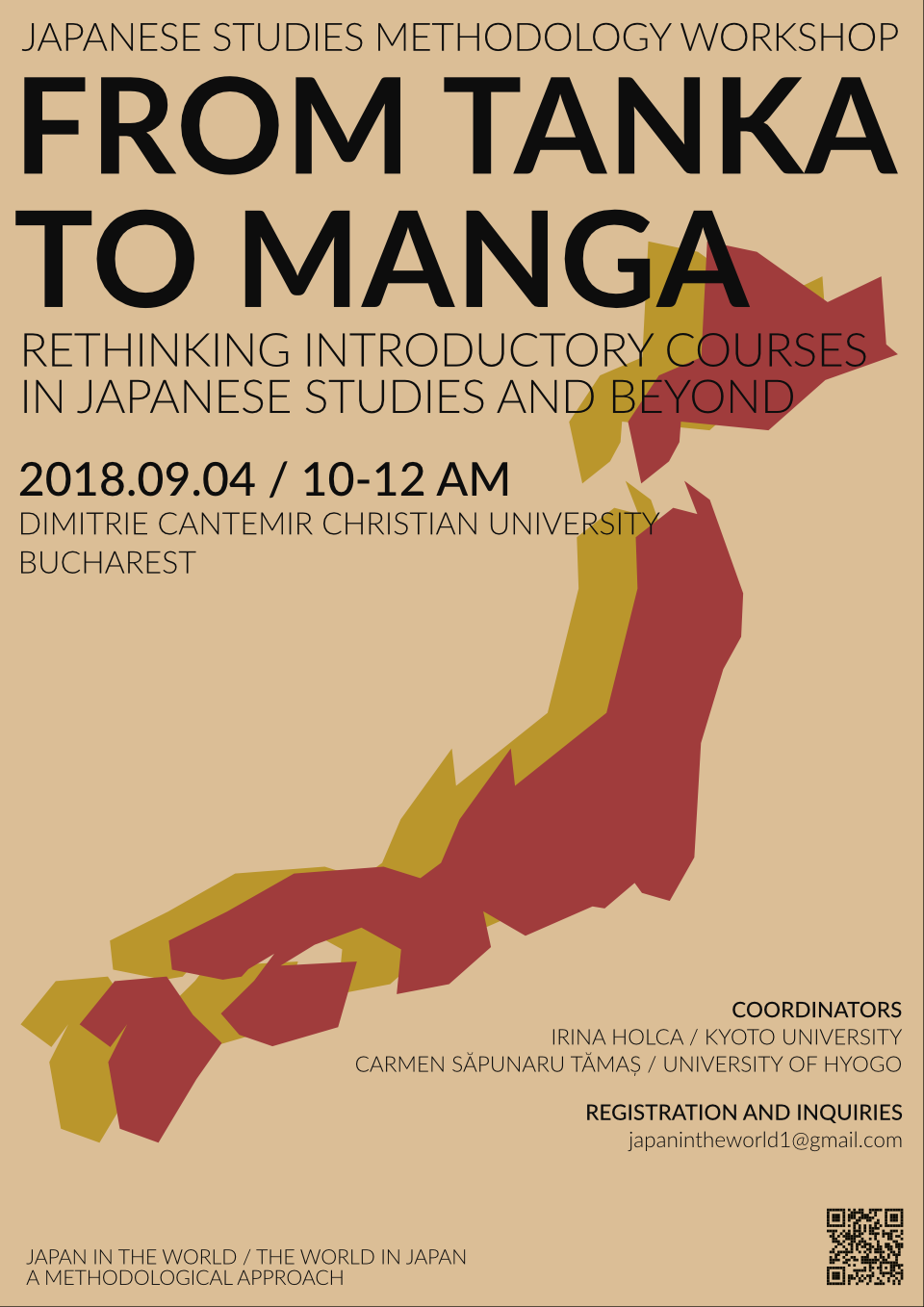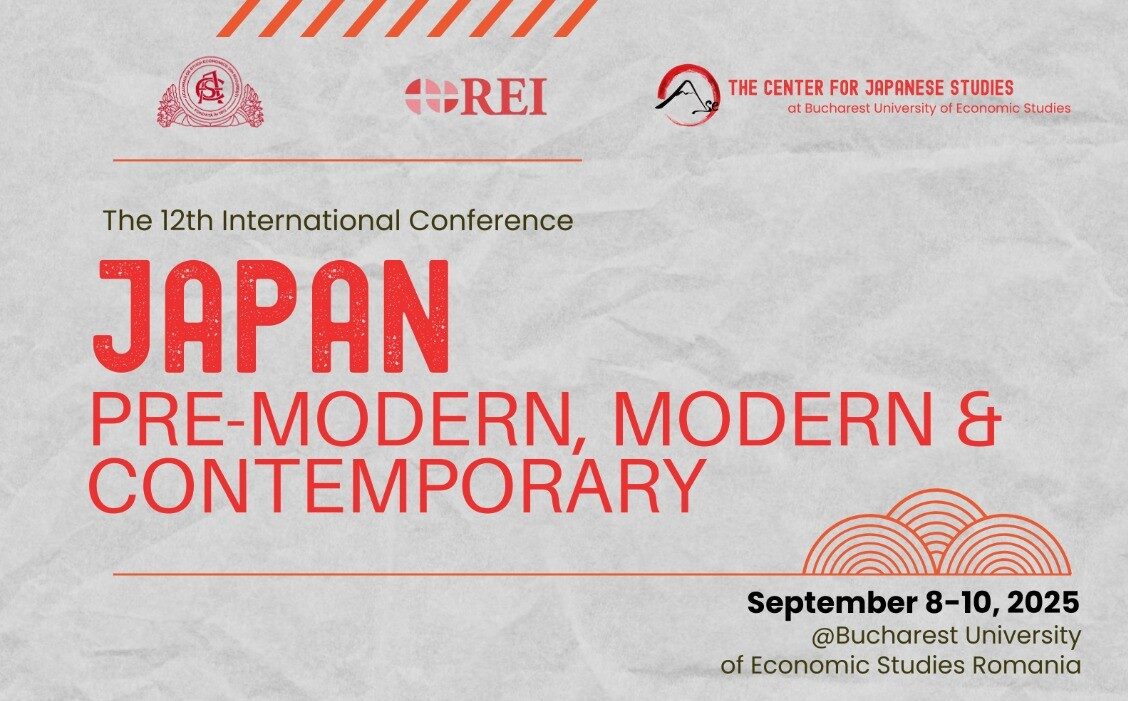 Here you can find some information about the sixth edition of the conference (September 3-5, 2018): the program, the abstracts of the papers presented, and the outline of the two workshops. We had numerous sessions about culture, literature and linguistics, and about 40 participants from 12 countries.
Here you can find some information about the sixth edition of the conference (September 3-5, 2018): the program, the abstracts of the papers presented, and the outline of the two workshops. We had numerous sessions about culture, literature and linguistics, and about 40 participants from 12 countries.
Program:
*****
Abstracts:
*****
Pre-conference workshop: “Learning from Shōgun today”
Coordinated by: Dr. Radu Leca (Heidelberg University), Dr. Alexandra Mustățea (Tōyō University)
 Thirty years after the first translation of James Clavell’s Shōgun into Romanian, it seems timely to assess the novel’s cultural and historical significance in Romania as well as in the broader European space. Starting from a few key topics introduced by Henry Smith and his collaborators in Learning from Shōgun – Japanese History and Western Fantasy (1980), we invited our fellow translators (as well as other colleagues interested in our project) to join us for a discussion on the perceptions and modalities of the novel shaping Japan’s image in communist Romania/Europe and its subsequent transfigurations.
Thirty years after the first translation of James Clavell’s Shōgun into Romanian, it seems timely to assess the novel’s cultural and historical significance in Romania as well as in the broader European space. Starting from a few key topics introduced by Henry Smith and his collaborators in Learning from Shōgun – Japanese History and Western Fantasy (1980), we invited our fellow translators (as well as other colleagues interested in our project) to join us for a discussion on the perceptions and modalities of the novel shaping Japan’s image in communist Romania/Europe and its subsequent transfigurations.
Workshop structure:
Part 1. The coordinators summarised the critical framework proposed by Henry Smith and his collaborators in the 1980 scholarly companion to Clavell’s novel and discussed its relevance and future possibilities for interpretation in the context of the project – the translation of Smith’s companion into Romanian, accompanied by short contextualising introductions.
Part 2. The participants worked in pairs or groups of three and discussed each chapter of the companion, together with possible directions for interpretation relevant to the Romanian cultural space. Some possible guidelines for discussion included, but were not limited to, Shōgun’s perception and function in communist Romania/ Europe, as well as its later transfigurations, following the advent of the digital age (e.g. have digital formats radically transformed the Shōgun-inherited Romanian image of Japan, or have certain tropes endured into the present day?).
*****
Japanese Studies: Methodology Workshop
Coordinated by Irina Holca (Kyoto University) and Carmen Tămaş (University of Hyogo)
 For most educators and researchers, courses with the title “An Introduction to Japanese Studies” (or something akin to it) are more than familiar: we have taken them, and we have taught them. Such courses tried to cover most aspects pertaining to Japanese culture in one (academic) year, or worse, in one semester. Critics should not be too severe: there has been a real need for an introduction, an overview of the Japanese society for students before they could move on to a more in-depth study of whichever aspect they chose as most beneficial for their careers. Even the famous “Understanding Japanese Society” by Joy Hendry, whose fifth edition is currently in print, has one chapter for all the major aspects that define a culture.
For most educators and researchers, courses with the title “An Introduction to Japanese Studies” (or something akin to it) are more than familiar: we have taken them, and we have taught them. Such courses tried to cover most aspects pertaining to Japanese culture in one (academic) year, or worse, in one semester. Critics should not be too severe: there has been a real need for an introduction, an overview of the Japanese society for students before they could move on to a more in-depth study of whichever aspect they chose as most beneficial for their careers. Even the famous “Understanding Japanese Society” by Joy Hendry, whose fifth edition is currently in print, has one chapter for all the major aspects that define a culture.
This workshop (1) introduced some of the problems encountered when teaching introductory Japanese studies courses in Japan and abroad, as they have been discussed at the previous three “Japan in the World, the World in Japan: A Methodological Approach” international conferences held in Japan, and (2) encouraged lively pair/ group discussions among the participating instructors and students, in order to identify further issues that need addressing in connection to the future of Japanese Studies, especially in the non-Anglophone world. Discussion questions included, without being limited to, the following:
- How much material can actually be covered in one semester?
- Should we include in the syllabus topics that are outside our area of specialization?
- Should we design a general introduction of a wide variety of topics, or should we focus on the in-depth analysis of a few selected (and related) themes?
- Should we lecture or should it be a student-centered course? Are lectures (still) necessary?
- What do our students actually need? (Taking into account their majors, language proficiency, cultural background).
